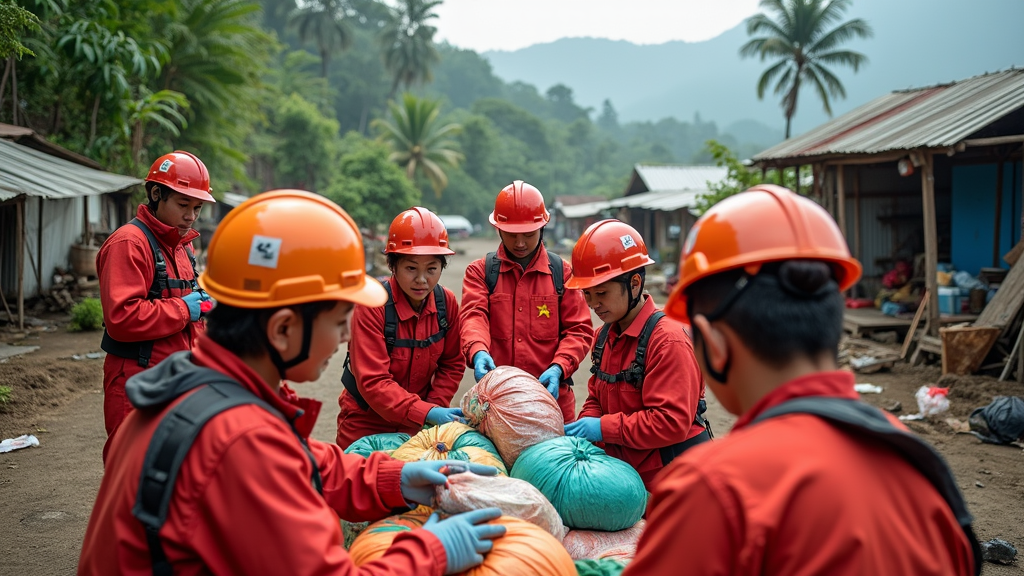New World Screwworm Threat: Protect Our Agriculture Now
New World Screwworm: A Dangerous Return
The unsettling resurgence of NWS
Ladies and gentlemen, the alarming return of the New World Screwworm (NWS, Cochliomyia hominivorax) in North America has sent shockwaves through the agricultural corridors and animal health communities. Once thought to be eradicated after decades of rigorous control efforts, the screwworm’s reemergence presents not just a health crisis for animals but also a looming threat to public safety. The stakes are rising as this parasitic menace edges further north, now reported in Mexico, tantalizingly close to the U.S. border.
Key facts about the New World Screwworm
The reality of NWS is unsettling. This insect lays its eggs in the wounds or mucous membranes of warm-blooded animals, and once hatched, the larvae feast on living tissue. It is a grotesque diet that leads to severe infections and, without timely treatment, can result in death. In 2023 alone, Panama reported an astronomical surge in screwworm cases, skyrocketing from an average of 25 incidences to over 6,500. Continuing its lethal journey, the parasite moved through Central America, with confirmed sightings in Mexico, just approximately 700 miles from the U.S. This rapid geographic expansion should instill fear, particularly among livestock owners and veterinarians alike.
A historical backdrop
Looking back, we see the proud efforts of the U.S. and Panama, which once successfully combatted this pest through a biological barrier. Until 1994, the use of sterile flies kept NWS at bay, effectively eradicating its presence from the United States. However, as resources dwindled and focus shifted, this protective barrier began to weaken, resulting in significant outbreaks. The hope of a disease-free environment has been replaced with dread as NWS once again claims territory in states like Chiapas, Oaxaca, and Veracruz. With every confirmed case, the memories of past successes flicker dimmer, giving way to the urgency of our current plight.
Economic implications
The grim reality is that if NWS establishes a footing in the U.S., the ensuing economic fallout could be catastrophic. Estimates suggest losses totaling $2.1 billion for cattle ranching and up to $9 billion across hunting and related industries in Texas alone. The repercussions of this infestation would echo far beyond immediate economic loss, impacting rural communities and livelihoods that depend on agriculture and livestock.
Current containment strategies
In response to the burgeoning threat, the USDA (APHIS) has mobilized to activate comprehensive quarantine measures to mitigate the screwworm’s advance. Trade restrictions have been imposed on livestock imports from Mexico, aimed at preventing any potential ingress of this insidious parasite. Furthermore, a concerted effort to release sterile flies in regions already affected is part of the ongoing battle against NWS. These interventions mirror strategies employed in the past but face unprecedented challenges given the scale of current outbreaks.
Expert insights
Experts from Texas A&M AgriLife stress the importance of raising awareness about NWS among farmers and veterinarians. Their insights reveal an urgent need for educational resources, including webinars and informative materials, to foster a comprehensive understanding of the parasite’s biology, behavior, and prevention strategies. USDA representatives emphasize that this isn’t just about economics—the issue of trade and quarantine measures stems from a fundamental commitment to safeguarding public health and the animal agriculture sector.
The stark reminder of how vulnerable our ecosystems can be lingers heavily in the air. As we tread further into uncertain territory with New World Screwworm, the stakes could not be clearer: failure to respond may result in not only devastating losses but also a reshaping of the agricultural landscape as we know it.
The unsettling reality
As the world watches this narrative unfold, the intersection of human and animal health becomes glaringly evident. NWS’s resurgence is more than just an agricultural crisis; it is a bellwether of the fragility we face in a globalized world. The interconnectedness of ecological systems and human activities cannot be taken lightly. A mere fly represents a multibillion-dollar threat echoing loudly across North America, from the farms in Texas to the bustling markets in cities—where the consequences of unchecked pestilence can ripple through economies and communities.
Stay informed, as the news continues to develop. For constant updates, tune into the Telegram channel for “Завжди свіжі новини” [https://t.me/World_news2035].
The human element in the fight against NWS
As we delve deeper into the implications of the New World Screwworm’s return, we must consider not just the statistics and the economic fallout but also the human stories woven into this unfolding narrative. Farmers, ranchers, and veterinarians are on the front lines of this crisis, grappling with fear and uncertainty. These individuals are more than mere data points; they are custodians of traditions and livelihoods, often risking their health and finances to protect their animals from this voracious invader.
Real-world consequences
Take, for instance, the story of a ranch in Texas. For decades, the family worked tirelessly to establish a green pasturage, a sanctuary where cattle roamed freely. Now, as the specter of NWS looms closer, anxiety has seeped into their daily life, manifesting in long nights spent worrying about the safety of their herd. The prospect of a screwworm infestation is not just a theoretical threat—it’s a stark possibility that could dismantle a lifetime of hard work and dedication.
Moreover, as experts warn us about the additional risks posed by NWS, the ties to public health become unequivocal. The notion that a parasitic fly could flip the script on food security and public safety is unsettling. The potential for zoonotic diseases, transferred from animals to humans, exacerbates an already precarious situation. In an age where pandemics have shown us our vulnerabilities, the resurgence of NWS is a chilling reminder of the interconnected nature of health—human, animal, and environmental.
Regional responses and preparedness
Communities are not standing idle. Agencies like the USDA, alongside local governments, have ramped up their efforts to tackle this crisis head-on. As part of these initiatives, they are conducting extensive outreach programs aimed at educating those who handle livestock on recognizing the early signs of infection and the critical steps for preventing the spread of this parasite. Timely intervention is key, and a well-informed community armed with knowledge stands a better chance of mitigating the impact of NWS.
In addition to education, collaboration between the U.S. and Central American countries is paramount. The commitment to disease surveillance and proactive measures is vital in creating an effective barrier against NWS. Backed by research and development into innovative pest control methods, the engagement of multiple stakeholders—including farmers, scientists, and governments—underscores the necessity of a unified front.
The path forward
As the grim reality of NWS unfolds, we learn the importance of preparedness, vigilance, and unity in protecting our agricultural systems. Historical lessons remind us that eradication is not merely a scientific challenge, but a call for societal responsibility. The threat posed by a small insect stresses the idea that resilience against biosecurity issues is not only the duty of veterinarians and farmers but also of every citizen who relies on a stable food supply.
As we stare into an uncertain future, let us remember that every insect, every outbreak, and every statistic tells a story waiting to be heard—stories of lives intertwined with the land, of struggles painted against the backdrop of a resilient but fragile ecosystem. The power of community, equipped with knowledge and fortified by collaboration, emerges as our greatest ally in the journey of facing the New World Screwworm.
In conclusion, the reemergence of NWS highlights an urgent need for collective awareness and action to safeguard our communities, agriculture, and public health. The interconnectedness of our existence persists, reminding us that even the smallest of threats can have expansive impacts—demanding not only our attention but also our resolve to combat this parasitic scourge.
For ongoing updates, please refer to the Telegram channel for “Завжди свіжі новини” [https://t.me/World_news2035] and for further reading on the topic, check out this analysis from The Week on the dangers posed by NWS https://newsmagazine.net.ua/
latest video
news via inbox
Subscribe to the latest news in the world of politics and technology






